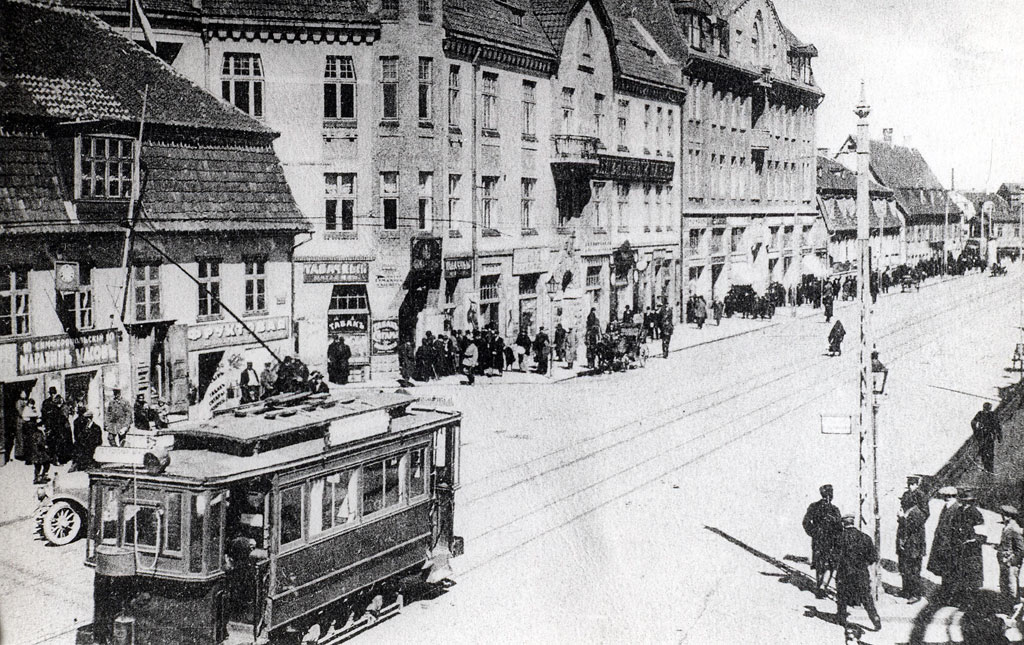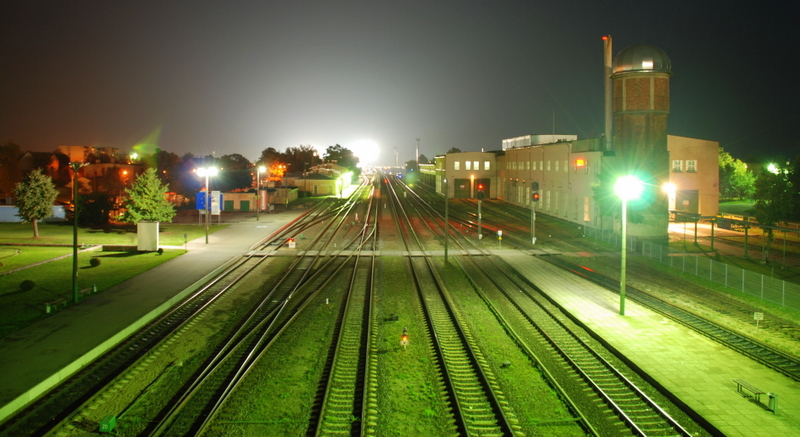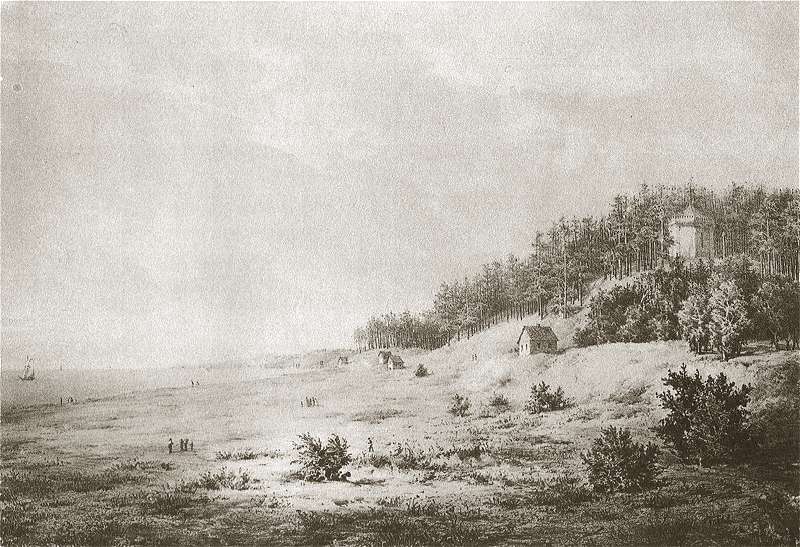|
Klaipėda Geothermal Demonstration Plant
The Klaipėda Geothermal Demonstration Plant is a geothermal heating plant in Klaipėda, Lithuania, constructed during the late 1990s and early 2000s. It was the first geothermal heating plant in the Baltic Sea region. Its purpose was to reduce carbon dioxide, sulfur dioxide, nitrogen oxide, and particulate emissions in the area, as well as to reduce Lithuania's dependence on foreign energy sources. The plant supplies district heating to the city. Construction was financed by a loan from the World Bank (US$5.9 million) and a grant from the Global Environment Facility (US$6.9 million). The Danish state company Dansk Olie og Naturgas (now Ørsted) provided technical support, and Enterprise Geoterma served as the implementing agency. The total cost of the plant was US$19.5 million. Since 2017 it has been closed due to financial and technical issues and the operating company Geoterma filled for bankruptcy and was liquidated in 2019. Background After declaring independe ... [...More Info...] [...Related Items...] OR: [Wikipedia] [Google] [Baidu] |
Lithuania
Lithuania, officially the Republic of Lithuania, is a country in the Baltic region of Europe. It is one of three Baltic states and lies on the eastern shore of the Baltic Sea, bordered by Latvia to the north, Belarus to the east and south, Poland to the south, and the Russian exclave, semi-exclave of Kaliningrad Oblast to the southwest, with a Maritime boundary, maritime border with Sweden to the west. Lithuania covers an area of , with a population of 2.89 million. Its capital and largest city is Vilnius; other major cities include Kaunas, Klaipėda, Šiauliai and Panevėžys. Lithuanians who are the titular nation and form the majority of the country's population, belong to the ethnolinguistic group of Balts and speak Lithuanian language, Lithuanian. For millennia, the southeastern shores of the Baltic Sea were inhabited by various Balts, Baltic tribes. In the 1230s, Lithuanian lands were united for the first time by Mindaugas, who formed the Kingdom of Lithuania on 6 July ... [...More Info...] [...Related Items...] OR: [Wikipedia] [Google] [Baidu] |
Nuclear Power
Nuclear power is the use of nuclear reactions to produce electricity. Nuclear power can be obtained from nuclear fission, nuclear decay and nuclear fusion reactions. Presently, the vast majority of electricity from nuclear power is produced by nuclear ''fission'' of uranium and plutonium in nuclear power plants. Nuclear ''decay'' processes are used in niche applications such as radioisotope thermoelectric generators in some space probes such as ''Voyager 2''. Reactors producing controlled fusion power, ''fusion'' power have been operated since 1958 but have yet to generate net power and are not expected to be commercially available in the near future. The first nuclear power plant was built in the 1950s. The global installed nuclear capacity grew to 100GW in the late 1970s, and then expanded during the 1980s, reaching 300GW by 1990. The 1979 Three Mile Island accident in the United States and the 1986 Chernobyl disaster in the Soviet Union resulted in increased regulation and p ... [...More Info...] [...Related Items...] OR: [Wikipedia] [Google] [Baidu] |
Riga
Riga ( ) is the capital, Primate city, primate, and List of cities and towns in Latvia, largest city of Latvia. Home to 591,882 inhabitants (as of 2025), the city accounts for a third of Latvia's total population. The population of Riga Planning Region, Riga metropolitan area, which stretches beyond the city limits, is estimated at 847,162 (as of 2025). The city lies on the Gulf of Riga at the mouth of the Daugava (river), Daugava river where it meets the Baltic Sea. Riga's territory covers and lies above sea level on a flat and sandy plain. Riga was founded in 1201, and is a former Hanseatic League member. Riga's historical centre is a UNESCO World Heritage Site, noted for its Art Nouveau/Jugendstil architecture and 19th century wooden architecture. Riga was the European Capital of Culture in 2014, along with Umeå in Sweden. Riga hosted the 2006 Riga summit, 2006 NATO Summit, the Eurovision Song Contest 2003, the 2013 World Women's Curling Championship, and the 2006 IIHF Wo ... [...More Info...] [...Related Items...] OR: [Wikipedia] [Google] [Baidu] |
Liepāja
Liepāja () (formerly: Libau) is a Administrative divisions of Latvia, state city in western Latvia, located on the Baltic Sea. It is the largest city in the Courland region and the third-largest in the country after Riga and Daugavpils. It is an important ice-free port. In the 19th and early 20th century, it was a favourite place for sea-bathers and travellers, with the town boasting a fine park, many pretty gardens and a theatre. Liepāja is however known throughout Latvia as the "City where the wind is born", likely because of the constant sea breeze. A song of the same name () was composed by Imants Kalniņš and has become the anthem of the city. Its reputation as the windiest city in Latvia was strengthened with the construction of the largest wind farm in the nation (33 Enercon wind turbines) nearby. Liepāja is chosen as the European Capital of Culture in 2027. Names and toponymy The name is derived from the Livonian language, Livonian word ''Liiv,'' which means "sand" ... [...More Info...] [...Related Items...] OR: [Wikipedia] [Google] [Baidu] |
Joniškis
Joniškis (; Samogitian language, Samogitian: ''Juonėškis''; ) is a city in northern Lithuania with a population of about 9,900. It is located 39 kilometers north of Šiauliai and 14 kilometers south of the Lithuania–Latvia border. Joniškis is the municipal and administrative centre of Joniškis district municipality. Name Joniškis is the Lithuanian language, Lithuanian name of the town. Historical versions of the name in other languages include Polish language, Polish: ''Janiszki'', Russian language, Russian: Янишки ''Yanishki'', Yiddish: יאַנישאָק ''Yanishok'', Latvian language, Latvian: ''Jānišķe'', and German: ''Jonischken''. History Joniškis was established in the beginning of the 16th century. It was mentioned in written sources on 23 February 1536 when Bishops of Vilnius and Bishop of Samogitia, Samogitia visited the area and found that people still practiced the Lithuanian mythology, old pagan faith. People were worshiping the God of Thunder (Perk ... [...More Info...] [...Related Items...] OR: [Wikipedia] [Google] [Baidu] |
Radviliškis
Radviliškis () (; ; , ''Radvilishok'') is a city in the Radviliškis district municipality, Šiauliai County, Lithuania. Radviliškis has been the administrative center of the district since 1950, and is an important railway junction. History Radviliškis was founded at the end of the 15th century. It was first mentioned in the book on state economics by M. Downar-Zapolsky listing the cities taxpayers in 1567. In 1687, John III Sobieski, John Sobieski, the king of Lithuania and Poland, granted the Market town, right of holding a market to it. Radviliškis was devastated many times by military forces, plague and hunger in the 17th–19th centuries. There were no citizens left in Radviliškis after the Bubonic plague, plague in 1708–1710. City growth began when the Liepāja–Romny Railway line, crossing the city, was built in 1870 and Radviliškis–Daugavpils line was built in 1873. Railwaymen constituted the majority of the residents. Around July 12, 1941, all 300 Jews ... [...More Info...] [...Related Items...] OR: [Wikipedia] [Google] [Baidu] |
Gargždai
Gargždai () is a city in western Lithuania located in Klaipėda County. The Minija River flows through the city.John S. Jaffer ShtetLinks: Gargzdai (Gorzd), LithuaniaJewishGen, Inc., the Home of Jewish Genealogy. Accessed June 18, 2011. The Gargždai Stadium is the city's main sports venue where the FK Banga Gargždai play its home games. Etymology The etymology of the town's name is uncertain, but it is thought to derive from the common word ''gargždas'', meaning "pebbles, gravel". In the Teutonic Order partition act of 1253, the town was mentioned as ''Garisda''. It seems reasonable to suggest that the name of the town is derived from the Gargždupis River, which flows in the vicinity of the Kalniškė hillfort adjacent to Gargždai. The name of the river may also have been influenced by its stony and gravelly banks. There is no doubt that the origin of the town's name is Curonian, as similar names are common in territories inhabited by the Curonians. In other languages Gar ... [...More Info...] [...Related Items...] OR: [Wikipedia] [Google] [Baidu] |
Šilutė
Šilutė (; previously ''Šilokarčiama''; ) is a city in the south of the Klaipėda County in western Lithuania. The city was part of the Klaipėda Region and ethnographic Lithuania Minor. Šilutė was the interwar period, interwar capital of Šilutė County and is currently the capital of Šilutė District Municipality. Name Šilutė's origin dates to an Public house#Inns, inn (Krug, locally ''karčema'') catering to travelers and their horses which was located halfway between Klaipėda and Sovetsk, Kaliningrad Oblast, Tilsit (Tilžė). The German name of ''Heydekrug'' referred to a ''Krug'' (an archaic word for inn) in the ''Heide'' (heathland). The inn was known for being in the region where most people spoke the Memelland-Samogitian dialect ''Šilokarčema''. History A famous fish market was opened in Šilutė almost 500 years ago, when Georg Tallat purchased the inn together with the land and fishing rights in 1511. The town was a gathering place for peasants from nearby ... [...More Info...] [...Related Items...] OR: [Wikipedia] [Google] [Baidu] |
Šilalė
Šilalė (; Samogitian dialect, Samogitian: ''Šėlalė'', ) is a city in western Lithuania, Samogitia, Tauragė County. It is located north of Tauragė. The River Lokysta flows through the town and there is a pond in the centre of the town. History The town is part of the Samogitian Ethnography, ethnographic Regions of Lithuania, region of Lithuania and was first mentioned in the sixteenth century. Its name derives from the generic word sila ("Pinewood") and Samogitian suffix ''-alė.'' It was located in the Duchy of Samogitia in the Grand Duchy of Lithuania within the Polish–Lithuanian Commonwealth. During World War II, the town was under Soviet occupation from 1940, and then under German occupation of Lithuania during World War II, German occupation from 1941 to 1944. In July 1941, 135 Jewish men from Šilalė were shot on a site in the Jewish cemetery. In September 1941, the Jewish women and children of Šilalė were shot in the Tūbinės forest. Around 1,300 Jews were ma ... [...More Info...] [...Related Items...] OR: [Wikipedia] [Google] [Baidu] |
Šiauliai
Šiauliai ( ; ) is a city in northern Lithuania, the List of cities in Lithuania, country's fourth largest city and the List of cities in the Baltic states by population, sixth largest city in the Baltic States, with a population of 112 581 in 2024. From 1994 to 2010 it was the capital of Šiauliai County. Names Šiauliai is referred to by various names in different languages: Samogitian language, Samogitian ; Latvian language, Latvian (historic) and (modern); Polish language, Polish ; German language, German ; Belarusian language, Belarusian ; Russian language, Russian (historic) and (modern); Yiddish language, Yiddish . History The city was first mentioned in written sources as ''Soule'' in Livonian Order chronicles describing the Battle of Saule. Thus the city's founding date is now considered to be 22 September 1236, the same date when the battle took place, not far from Šiauliai. At first, it developed as a defence post against the raids by the Teutonic Knight ... [...More Info...] [...Related Items...] OR: [Wikipedia] [Google] [Baidu] |
Palanga
Palanga (; ; ) is a resort town, resort city in western Lithuania, on the shore of the Baltic Sea. Palanga is the busiest and the largest summer resort in Lithuania and has sand, sandy beaches (18 km, 11 miles long and up to 300 metres, 1000 ft wide) and sand dunes. Officially Palanga has the status of a city municipality and includes Šventoji, Lithuania, Šventoji, Nemirseta, Būtingė, Palanga International Airport and other settlements, which are considered as part of the city of Palanga. Etymology The name of the town is likely of Curonian language, Curonian origin, as proposed by the linguist Kazimieras Būga. The primary argument is the suffix "''-ng-''", which is particularly distinctive of Curonian toponyms (Gandinga, Ablinga, Būtingė, etc.). The root ''pal-'', furthermore, is also associated with the landscape of lowlands or marshes. This is exemplified by the Lithuanian ''palios'', which translates to "large marsh", and the Latvian language, Latvian ''pa ... [...More Info...] [...Related Items...] OR: [Wikipedia] [Google] [Baidu] |
Cambrian
The Cambrian ( ) is the first geological period of the Paleozoic Era, and the Phanerozoic Eon. The Cambrian lasted 51.95 million years from the end of the preceding Ediacaran period 538.8 Ma (million years ago) to the beginning of the Ordovician Period 486.85 Ma. Most of the continents lay in the southern hemisphere surrounded by the vast Panthalassa Ocean. The assembly of Gondwana during the Ediacaran and early Cambrian led to the development of new convergent plate boundaries and continental-margin arc magmatism along its margins that helped drive up global temperatures. Laurentia lay across the equator, separated from Gondwana by the opening Iapetus Ocean. The Cambrian marked a profound change in life on Earth; prior to the Period, the majority of living organisms were small, unicellular and poorly preserved. Complex, multicellular organisms gradually became more common during the Ediacaran, but it was not until the Cambrian that fossil diversity seems to rapidly ... [...More Info...] [...Related Items...] OR: [Wikipedia] [Google] [Baidu] |







